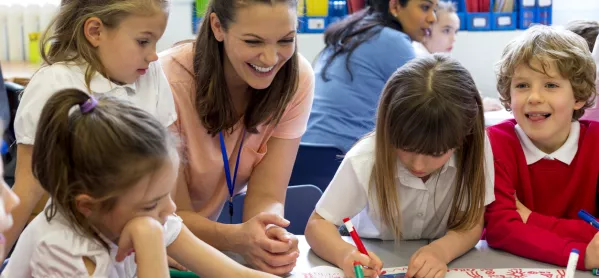- Home
- Do progression frameworks really help?
Do progression frameworks really help?

How good a teacher are you? Would you say you are able to teach children confidently? Or perhaps you’d go so far as to say that you teach children effectively?
If that’s not you, maybe you are not so sure, and would think of yourself more as “beginning to teach children competently”? But at least you can be assured that that’s better than “teach children, with support”, surely?
Of course, such descriptors are all a nonsense. Most teachers would meet all of those descriptors in some contexts, but none of them really tells you anything.
Not that has stopped many schools using such vague language for their appraisals until fairly recently. Somehow it seems that teachers were meant to move from “using some differentiation” to “using highly effective differentiation” gradually as they moved up the pay scale.
The unintended consequences of Ofsted
Thankfully, we seem to have moved beyond such nonsense for teachers, but just recently we’ve seen it start to creep back in again for pupils. Having finally seen the back of the vague national curriculum levels, there’s been a sudden boom in “progression documents” for the foundation subjects: the unintended consequences of Ofsted.
As schools - particularly primary schools - have raced to bring their curriculum in the foundation subjects up to scratch, suddenly progression frameworks have become all the rage again.
Presumably this is based on Ofsted’s stipulation that a curriculum should be carefully planned and sequenced. There’s no doubt that it’s a significant shift from previous frameworks where inspectors barely looked beyond English and maths. But have progression documents really helped?
Unwarranted confidence
You can find them on school websites all over the country now, but I can’t help but wonder if they’re actually of any use to teachers. They suffer from the same problems as the old appraisal frameworks: they’re virtually meaningless. It’s easy to find examples of their vagueness, which helps no one.
Children in Year 2 art lessons are expected to “experiment with different materials”, but by Year 6 they should “use a range of materials confidently”.
Wouldn’t confident users of materials also continue to experiment with them? And, frankly, I think you’re much more likely to find a Year 2 using pastels confidently than a Year 6 - that’s not to say they’re any good at it; it’s just that infants have a tendency for confidence even when it’s unwarranted.
We see it across all the subjects: infant children “use sources to answer historical questions” (surely also a good descriptor of a history doctoral thesis?), while older juniors move on to “use a range of sources to find out about a particular time period”.
Is that really a progression? And what does it look like in the classroom or the planning?
Confusing inputs and outputs
Where schools are relying on these documents to show careful sequencing, I rather suspect they’ve confused inputs and outputs. Hopefully, our curriculum planning and sequencing will lead to children who can confidently experiment with materials, or use varied sources to draw conclusions, but that doesn’t happen simply by willing them to do so. We need to plan carefully sequenced opportunities over their time with us, in order to achieve that.
That’s what lies behind the intent of the new framework: inputs. We need to spend less time worrying about how a theoretically average Year 4 geographer might look slightly different to a Year 5 one, and focus much more on what content we need to teach them - what opportunities we need to provide - to make that happen.
There’s plenty of work involved in that already - work that has often got lost in recent years - so we’ve lots of catching up to do. But that’s got to be time better spent than creating vague progression documents.
Michael Tidd is headteacher at East Preston Junior School, in West Sussex. He tweets @MichaelT1979
Keep reading for just £1 per month
You've reached your limit of free articles this month. Subscribe for £1 per month for three months and get:
- Unlimited access to all Tes magazine content
- Exclusive subscriber-only stories
- Award-winning email newsletters



